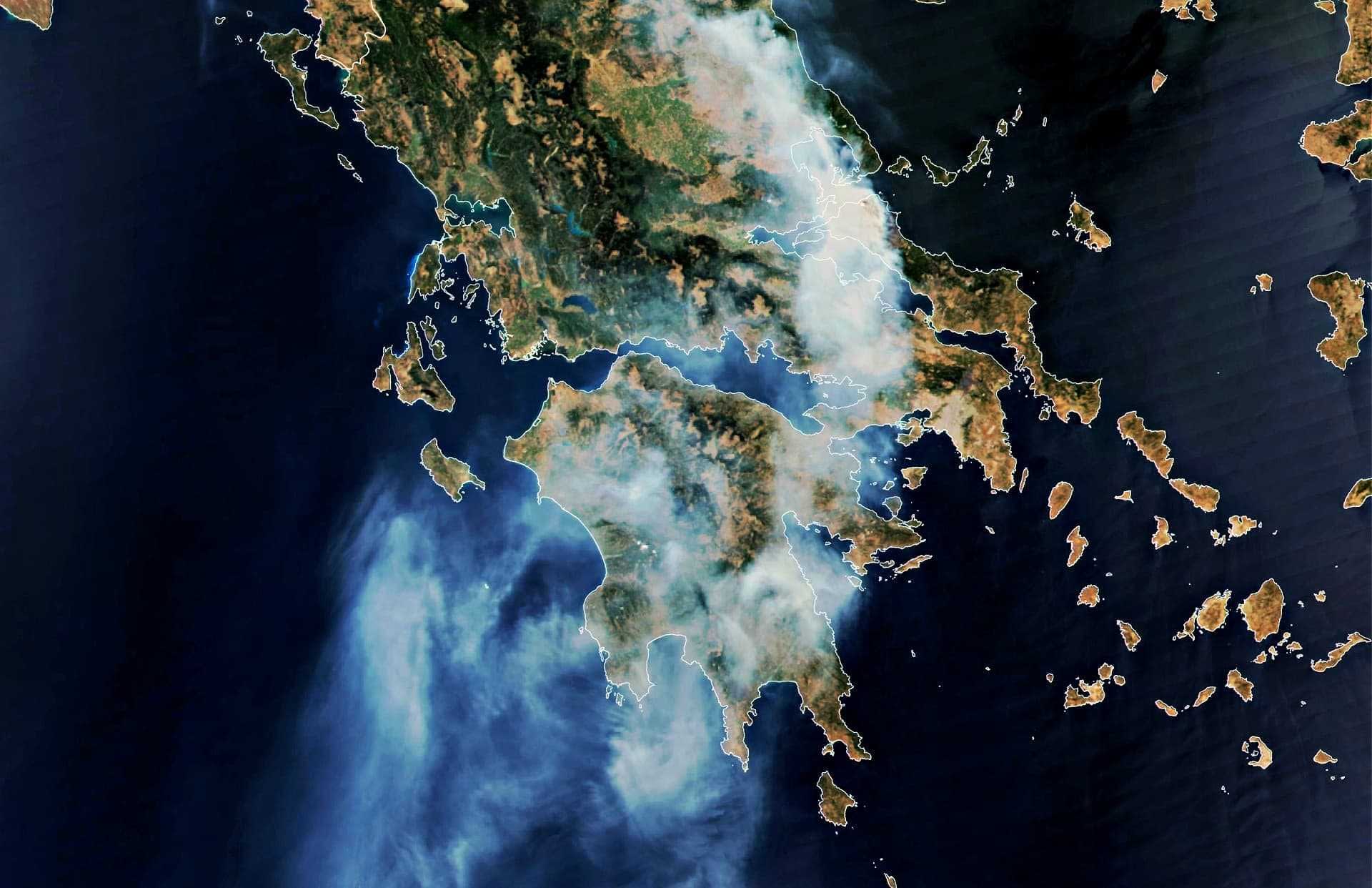Heatwave, Deadly Fires Threaten the Approaching Olive Harvest in Greece
The ongoing drought has led to wildfires burning around the country, damaging olive trees, and further diminishing the prospects of the 2021 harvest.
 Lefteris Damianidis
Lefteris DamianidisIn the first week of August, Greece faced the most severe heatwave in 30 years, with temperatures soaring to around 45 °C for several days in a row.
The combination of the prolonged drought and the complete absence of rain for the past three months have dried out the soil and deprived the olive trees of any water source and the growers of a substantial crop.
We are extremely worried, but all we can do now is wait. If we get some rain before harvest time, we will at least get part of the yield of olive oil we were initially expecting.
Many producing territories of Greece are feeling the impacts of the heat, especially the areas in which olive groves are not irrigated, such as the Aetolia-Acarnania region in the central-west of the country, the largest producer of Kalamon table olives.
See Also:2021 Harvest Updates“After last year’s rich harvest, we were expecting a mediocre yield of olives this season, but the output of the trees will be further deteriorated by the recent heatwave,” Alexandros Samaras, a local agriculturist, told Olive Oil Times. “This goes mostly for the table olives of the Kalamon variety, but the trees that provide olives for processing have also been affected.”
“Our groves were watered until some years ago, but not anymore,” he added. “Many trees that have been harmed by the heat have already dropped most of their olive fruits as they can no longer sustain them.”
Similar ramifications of the drought and the heatwave were also reported in other areas of the country, where an alarming situation began to take shape in the spring when frost events were followed by hotter than usual days.
Producers on Crete are bracing themselves for a record-low yield of olive oil – around 20,000 tons – according to the deputy director of the Heraklion agricultural association, Myron Hilentzakis.
In the region of Korinthia in the Peloponnese, most olive groves are non-irrigated. Many olive trees of the Manaki variety, which dominate the region, remain fruitless due to the prevailing dry weather conditions.
The phenomenon of reduced fruition is also evident in the olive groves of Messenia, one of the most bountiful territories of the country, which usually produces more than 50,000 tons of top-quality olive oil.
The prospects are better in the neighboring region of Lakonia, where most of the olive groves are irrigated. As a result, the area expects to match its average annual production of olive oil with around 24,000 tons next season.
Greece has already requested financial aid from the European Union for olive oil and table olive producers affected by the adverse weather of last spring.
To add insult to injury, the week-long heatwave was followed by deadly wildfires, which are now contained but continue to burn forests and crops across the country.
The territories hit most seriously were the northern outskirts of Athens, the region of Ilia in the Peloponnese, the Mani area in Laconia and the north of Evia, the second-largest Greek island, located in the Aegean Sea just a few miles off the mainland.

Smoke plumes of the wildfires in Greece on 8 August 2021 (NASA)
Thousands were evacuated from villages and settlements in these areas, where the fires took a heavy toll on properties, houses and livestock. Two deaths were reported, including a firefighter who was fatally injured while on duty in the north of Athens.
“[It’s] a catastrophe,” Marinos Anastopoulos, a farmer in the Peloponnese, said. “The fire came around midday with swirling winds, and homes were burned. A lot of animals burned to death. Rabbits, sheep, dogs, everything.”
According to initial estimates, the blazes have consumed more than 89,000 hectares of forests and crops so far, a whopping increase of 336 percent compared to the yearly averages from 2002 to 2020.
The olive groves surrounding Ancient Olympia in the Ilia region, a contemporary town near the archaeological site of Olympia, had to cope with the wildfires that ravaged the area, fanned by the drought and the extreme heat.
According to Yiorgos Georgopoulos, the mayor of Ancient Olympia, around 5,300 hectares of the crops burned in the area were olive trees. The mayor also warned that many of the local mills would be out of business due to the unavoidable reduction of olive production in the coming years.
Local producers said they are facing an unprecedented situation, and the coming harvesting season remains a challenging puzzle to untangle.

Apostolis Panagiotou
“Our area is teeming with olive trees of the Koroneiki and the Nemoutiana cultivars,” Nikos Papailiou, an olive farmer and mill owner based at Xirokambos near Ancient Olympia, told Olive Oil Times.
“We had never seen that before,” he added. “The trees are not irrigated, and the persistent drought combined with the recent heatwave wore them out. On top of that, many olive trees were destroyed by the wildfires. As a result, many growers based in settlements near Ancient Olympia have lost large swathes of their olive groves.”
“It is still early to estimate the exact overall damage inflicted, especially on the trees affected by the fires,” Papailiou continued, fearing that next season’s prospects of the olive oil yield in the area have become gloomier.
“In any case, it is a pity because we were ahead of a strong yield this year both in terms of quality and quantity,” he concluded. “We are extremely worried, but all we can do now is wait. If we get some rain before harvest time, we will at least get part of the yield of olive oil we were initially expecting. Otherwise, the olive drupes will remain dry inside with no juice to extract.”








